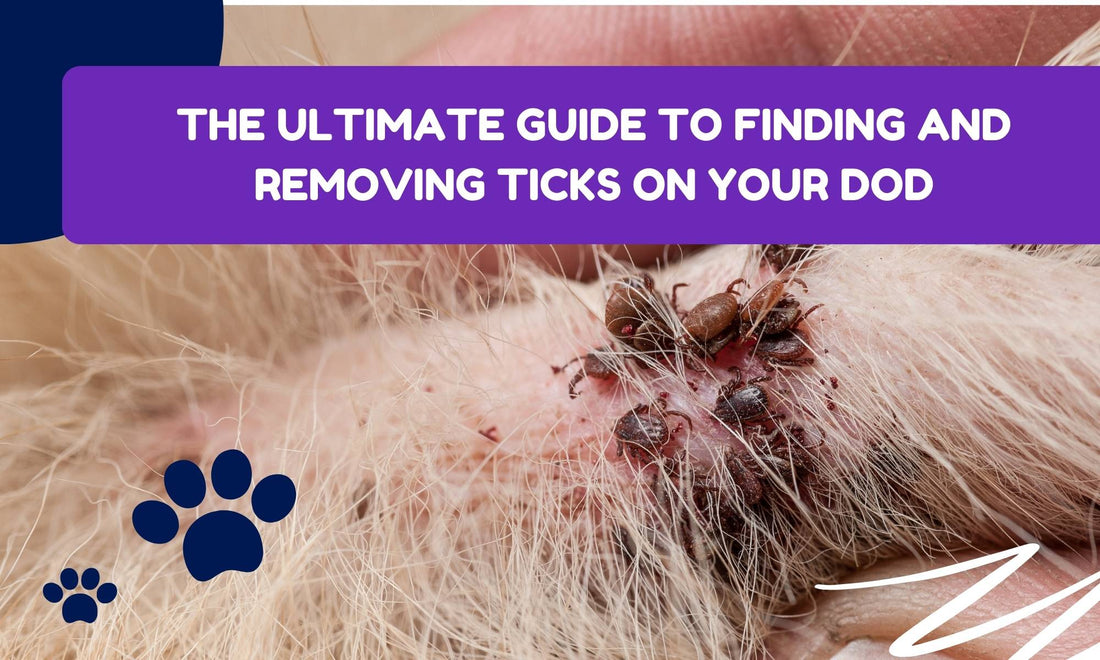Ticks pose a significant challenge for dogs (and even humans) across the entire United States, regardless of the season. As temperatures climb and you and your furry companion spend more time outdoors, these bloodthirsty parasites become an even greater menace. Concealing themselves amidst tall grasses and shrubs, ticks patiently await your dog's arrival, eagerly seeking an opportunity to latch onto them.
It is crucial to prioritize tick prevention, and not just because these eight-legged creatures tend to trigger a sense of disgust. The truth is that ticks harbor numerous life-threatening diseases. Alarming as it may be, certain tick-borne illnesses currently lack a cure, underscoring the necessity of thorough tick checks and prompt removal.
Before opting for any tick prevention medication, it is wise to consult your veterinarian. Factors such as your dog's age, breed, geographical location, and daily routines all play a role in determining the most effective approach.

Prepare Yourself
Veterinary experts advocate for an offensive approach when it comes to tick prevention, emphasizing the importance of thoroughly inspecting your dog for ticks immediately upon returning indoors. Take the time to carefully examine your dog's entire body, running your hands over them to detect any small bumps or irregularities.
If you happen to discover a tick on your dog, there's no need to rush them to the veterinarian, provided you are equipped with the knowledge of safe tick removal techniques. Ensure you remove the entire tick, including its head, using either fine-point tweezers or a specially designed tick removal hook.
"Ticks can transmit diseases, such as Lyme disease, or induce infections if they have been attached for approximately 48 hours." "This is precisely why it is crucial to examine both your dog and yourself as soon as you return indoors."
Understanding the Dangers of Ticks
Ticks are parasitic arachnids that latch onto the skin of animals, including dogs, to feed on their blood. These tiny creatures can carry harmful pathogens, such as bacteria and parasites, which can cause diseases like Lyme disease, anaplasmosis, and ehrlichiosis. Detecting and removing ticks promptly is crucial to minimize the risks to your dog's health.
Identifying Common Tick Hotspots
To effectively locate ticks on your dog, it's essential to be aware of their favorite hiding spots. Here are the key areas to examine:
1. Ears and Ear Flaps
Ticks are often drawn to the warm and sheltered environment inside a dog's ears. Gently inspect the ear canals and the ear flaps, paying close attention to any signs of ticks.
2. Head and Neck
Ticks may latch onto the head and neck region, particularly around the eyes, under the chin, and along the jawline. Take your time to carefully examine these areas, running your fingers through your dog's fur.
3. Armpits and Groin
Ticks prefer areas with less fur and thinner skin, making the armpits and groin prime locations for infestation. Lift your dog's legs and inspect these areas thoroughly, making sure to part the fur for a closer examination.
4. Between Toes and Paw Pads
Ticks can hide between your dog's toes and paw pads. Carefully examine each individual toe, spreading them apart gently to check for any ticks hiding in these crevices.
5. Tail Base
The base of the tail is another common spot for ticks to attach. Lift your dog's tail and inspect the area carefully, paying attention to any unusual bumps or small black dots.
Techniques for Safe Tick Removal
Now that you know where to look for ticks on your dog, it's important to understand how to safely remove them. Improper removal methods can lead to the tick's mouthpart breaking off and remaining embedded in your dog's skin, potentially causing infection. Follow these steps for safe and effective tick removal:
Prepare the necessary tools: Gather a pair of fine-tipped tweezers, gloves, and rubbing alcohol to disinfect the affected area afterward.
Position yourself: Find a well-lit area and position yourself comfortably, ensuring both you and your dog are relaxed throughout the process.
Grasp the tick: Using the tweezers, carefully grasp the tick as close to your dog's skin as possible. Be cautious not to squeeze or crush the tick's body.
Pull gently: With a steady and gentle motion, slowly pull the tick straight out without twisting or jerking. Ensure that you remove the entire tick, including its mouthpart.
Disinfect the area: After removing the tick, clean the area with rubbing alcohol to minimize the risk of infection.
Dispose of the tick: Place the tick in a sealed container or bag and dispose of it safely. It's a good idea to keep the tick for identification purposes in case any symptoms develop in your dog.
Monitor for symptoms: Watch for any signs of illness in your dog, such as fever, lethargy, loss of appetite, or lameness. If you notice any unusual symptoms, consult your veterinarian immediately.

Preventative Measures Against Ticks
While it's important to know how to find and remove ticks, prevention is always the best approach. Here are some proactive measures you can take to reduce the likelihood of tick infestations:
1. Tick Control Products
Consult with your veterinarian to determine the most suitable tick control products for your dog. Options include topical treatments, tick collars, and oral medications that can effectively repel or kill ticks.
2. Regular Grooming
Maintain a regular grooming routine for your dog, which involves thorough brushing and inspection of their coat. This helps you detect ticks early and remove them before they have a chance to embed themselves. Recommended dog bath products are Pooch Ooze Dog Shampoo, Dog Hot Spot Solution, and Dog Deodorant Spray.
3. Tick-Proof Your Yard
Make your yard less inviting to ticks by keeping the grass short, removing leaf litter and debris, and creating a barrier between wooded areas and your living space. Consider using pet-safe tick repellents in outdoor areas frequented by your dog.
4. Avoid Tick-Infested Areas
When taking your dog for walks or hikes, try to avoid heavily wooded or grassy areas known to be tick habitats. Stick to well-maintained trails and paths whenever possible.
5. Regular Health Checkups
Schedule regular veterinary checkups for your dog. Your veterinarian can perform thorough examinations and discuss additional preventive measures, such as tick-borne disease vaccinations, based on your dog's specific needs.
Conclusion
We hope this comprehensive guide has empowered you with the knowledge and techniques to effectively find and remove ticks from your dog. By implementing the strategies outlined here and prioritizing regular tick checks, you can significantly reduce the risk of tick-borne diseases for your furry companion.
Remember, early detection and prompt removal of ticks are key to protecting your dog's health. Stay vigilant, maintain a proactive approach to tick prevention, and always seek veterinary guidance if you have concerns or notice any unusual symptoms in your dog.



